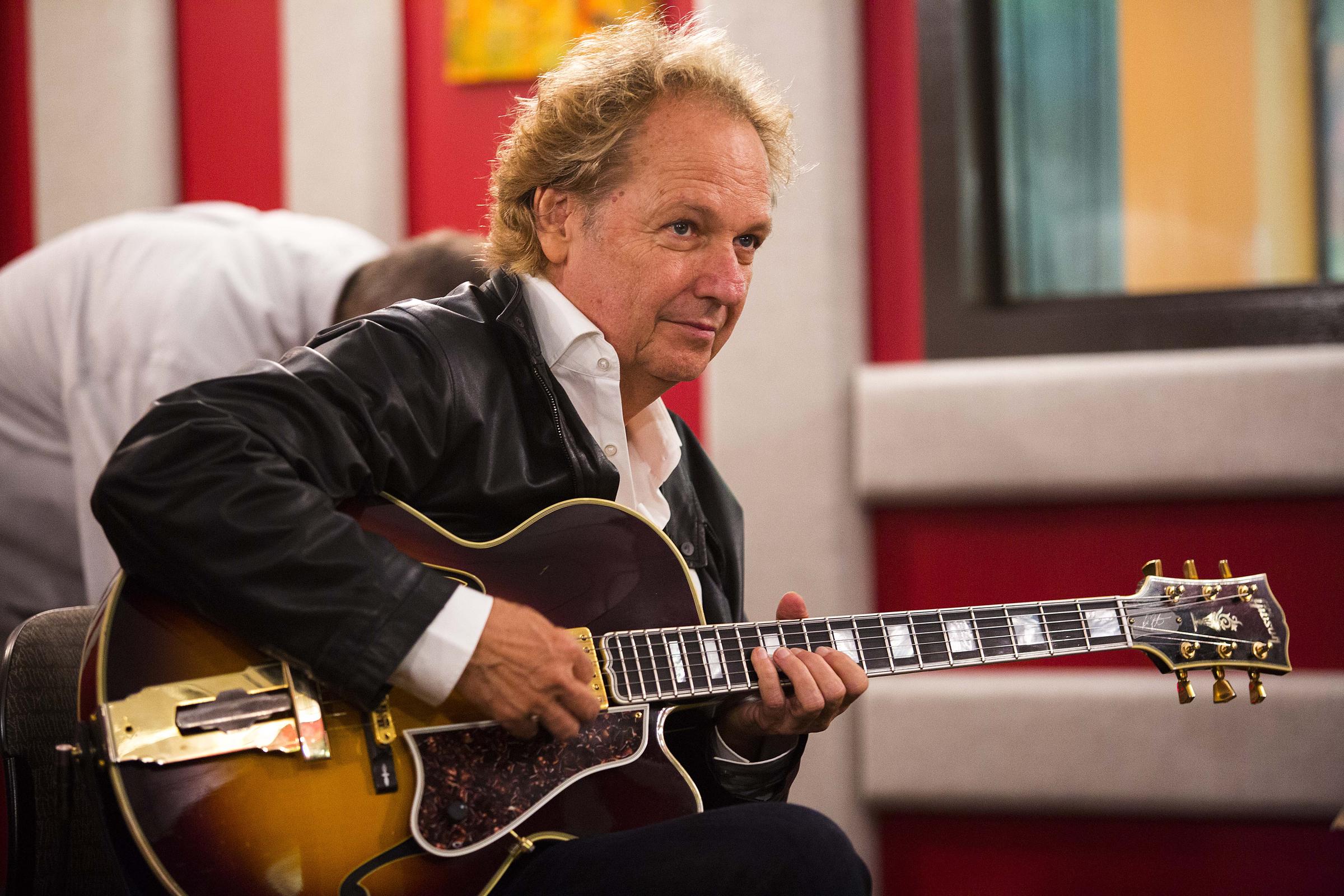
Lee Ritenour On The Line Rar
August 30, 2009 Lee Mack 'Captain Fingers' Ritenour is a guitarist, recording artist, composer and producer. He began his career at the age of 16 and has appeared on over 3000 sessions, recorded over 40 albums, and has charted over 30 instrumental and vocal contemporary jazz hits since 1976.[1] He is probably best known for the hit 'Is It You' in 1981. Fiat ecu scan keygen crack serial number 1.
Ritenour is considered to be a pioneer in the smooth jazz and jazz-funk genres of music. Biography Ritenour was born January 11, 1952 in Los Angeles, California. He played his first session when he was 16 with the Mamas & the Papas and given the moniker, 'Captain Fingers', because of his manual dexterity on the guitar. Ritenour was a sought-after session guitarist by the mid-1970s, and won Guitar Player Magazine’s Best Studio Guitarist twice in the 1970’s. He is noted for playing his red Gibson ES-335 and his Gibson L5 guitars. Lee on stage One of his most notable influences is the pioneering jazz guitarist Wes Montgomery among others like Joe Pass, Kenny Burrell and John Mcglaughin.
Find album reviews, stream songs, credits and award information for On the Line - Lee Ritenour on AllMusic - 1983 - With JVC midwifing again for the insatiable jazz Find album reviews, stream songs, credits and award information for On the Line - Lee Ritenour on AllMusic - 1983 - With JVC midwifing again for the insatiable jazz. Apr 14, 2018 - Harlequin 02. San Ysidro 04. Before It's Too Late 05. Cats of Rio 06. Grid Lock 07. Silent Message 08. The Bird Lee.
His prolific career includes a Grammy Award for the collaboration work Harlequin (1985), and 17 other Grammy nominations. Ritenour also holds the distinction of having two of the promotional videos for his songs 'Is It You' and 'Mr. Briefcase' being played during MTV’s first day.
Ritenour has been at the top of many guitar polls throughout the world. Style Ritenour’s solo career began in 1975 with the recording of his album First Course. Released in 1976, the album gave a strong representation of the mid-1970s L.A. Jazz/Funk sound.
Critics did, however, complain that his first album was 'lightweight.' So Lee countered this with his strongly fusion-based follow up, Captain Fingers. This was followed by two more fusion efforts—The Captain’s Journey (1978) and Feel The Night (1979). On these albums, Ritenour primarily used something of a rich, yet rock-oriented distorted guitar sound, coming from his Gibson ES-335 guitar. In other instances on these albums, clean sounds were heard coming from his Gibson L5 and classical acoustic guitars (he played his classical acoustic guitars almost exclusively on his album Rio in 1979). In the 1970s, Ritenour would often use effects like wah-wah, phasers, chorus, and flangers on his electric instruments. Also, during the late 1970s, Ritenour can be heard using the 360 Systems guitar synthesizer (he is pictured sitting in front of it on the back cover of his Captain Fingers album).
He can be heard using the synthesizer on the track Captain Fingers (from the album with the same title), and can also be heard playing solo with the synthesizer on the song 'What Do You Want?' From 'The Captain’s Journey.' In 1979, Ritenour 'was brought in to beef up one of [ Pink Floyd’s ] The Wall’s heaviest rock numbers, ‘Run Like Hell’.' [2] He also played 'uncredited rhythm guitar' on 'One Of My Turns'.[3] As the 1980s began, Ritenour began to add stronger elements of pop to his music, beginning with Rit in 1981. For this, he kept with his distorted sound, now using his Ibanez LR-10 signature model guitar. He continued with the pop-oriented music for two albums after Rit (Rit/2 in 1982 and Banded Together in 1984), while releasing a slick, yet more fusion-styled, Direct-Disk instrumental album in 1983 called On The Line.
He also provided rhythm guitar on Tom Browne’s hit, Funkin’ for Jamaica. 3d modeli zdanij dlya 3ds max 4. The Lee Ritenour Gibson L5 Signature archtop guitar. In 1985, he recorded his first album for GRP with Dave Grusin, entitled Harlequin.
It featured Lee primarily on his classical acoustic guitar and also featured Brazilian singer/songwriter Ivan Lins. Up to this point, this album along with Rio arguably gave the strongest representation of Lee’s Brazilian influences. The following year, 1986, Ritenour released the album Earth Run, which featured him using the then-newly designed SynthAxe guitar. He used nine different guitars on the album, most notably the SynthAxe, his Valley Arts guitar, and his Gibson Chet Atkins acoustic.
The album also featured long-time collaborator Phil Perry for the first time, on the track 'If I’m Dreaming, Don’t Wake Me' — a song also featuring David Foster and Maurice White. He also produced songs and played guitar on Deniece Williams’s LP Hot on the Trail during that same year. Ritenour continued in a direction strongly featuring other artists in 1987, with Portrait.